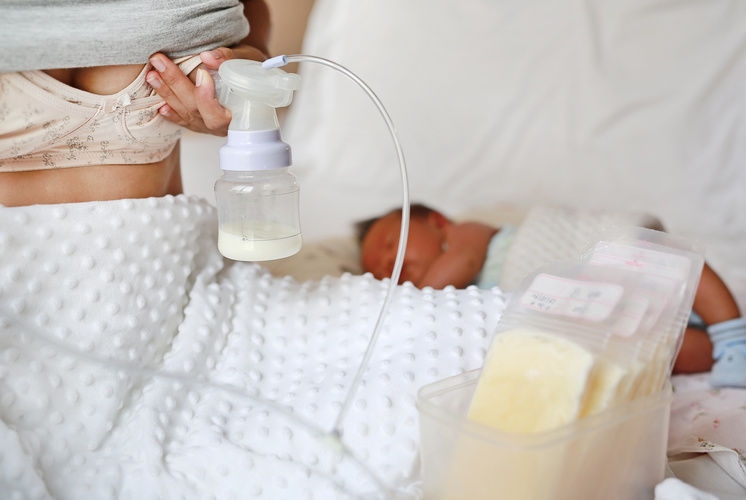Methods for expressing
- Hand expressing – some women express their milk into a container by massaging it from their breasts.
- Hand pumps – these hand-powered devices operate with a pumping mechanism that fixes to your nipple.
- Electrical pumps – these simulate the pump action of a hand pump through mechanical action but are battery or electrically powered.
Hygiene and preparation
Whichever method you choose, it’s important to practice basic hygiene. Always wash your hands with warm water and soap beforehand.
Keep in mind that your baby’s immune system is developing, so you must be diligent with cleaning, sanitising and drying any pump parts that come into contact with your milk. Milk residue that remains can become a breeding ground for bacteria.
Storage
According to the Australian Breastfeeding Association, the following guidelines should help keep your breastmilk safe for consumption:
Freshly expressed milk:
Ideally, you’ll store breastmilk in the refrigerator if you’re planning to get to it soon. However, if you are in a situation where the expressed breastmilk will remain at room temperature, make sure the room is below 26° and baby feeds ideally within 6 hours.
When you do store freshly expressed breast milk in the fridge, keep it at the coldest part of the refrigerator (usually the back). Baby must consume this milk within 72 hours.
You can freeze your breastmilk. Some families like to keep a supply in the freezer for emergencies, or if mum will be away for an extended period. Milk lasts for two weeks at -15°, three weeks at -18°, or 6-12 months at -20°.
Previously frozen expressed breastmilk thawed in the fridge:
Thawed milk should only stay in the refrigerator for a maximum of 24 hours and should never be refrozen. You may wish to bring the thawed milk to room temperature before feeding your little one, but make sure the feed happens within four hours of being taken out of the fridge.
Previously frozen breastmilk thawed in warm water:
If you’re using warm water to thaw frozen breastmilk, you should try to feed baby as soon as the milk is ready. Changing temperature back and forth too many times can make food or liquid dangerous to consume. If you do put milk thawed with warm water back in the refrigerator, make sure it is consumed within a maximum four hours, though this is best avoided altogether.
Recommended Articles:
https://www.babybunting.com.au/baby-talk-blog/establishing-a-feeding-routine-for-your-newborn//
https://www.babybunting.com.au/baby-talk-blog/increasing-your-breast-milk-supply/



